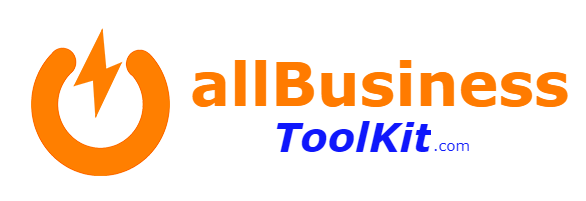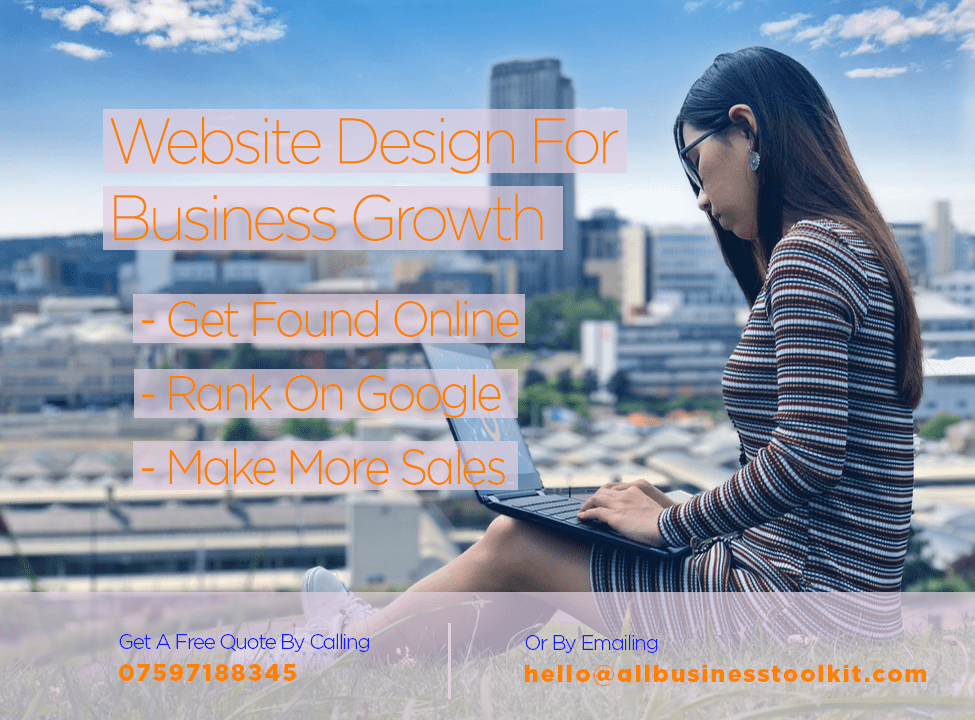Digital marketing is one of those terms that are shrouded in confusion. It seems to mean something different to everyone.
Digital marketing is the process of leveraging your business online. It includes reaching out to people and assessing markets by understanding what people are talking about on social media and websites.
In this article, we will discuss everything you need to know about digital marketing. This includes all the components and activities you can do.
1. What Is Digital Marketing?
You may have heard digital marketing as internet marketing, e marketing and web marketing. In its most simplistic terms, digital marketing is marketing over the internet.
Together, the words digital and marketing come together to mean the principle of connecting people to brands, products and services through the means of communicating in binary.
The internet is the modern form of a medium we use to communicate in binary where a message can reach people across the globe in seconds.
In order to explain this in grave detail let us look at the terms digital and marketing separate from each other.
1.1 What is Digital
Digital is the encoded language of binary, which is an expressed sequence of 0’s and 1’s to form applications powered by a computing device. In essence, digital is everything that is preview through a screen, be it mobile phones, televisions and computer monitors.
1.2 What is Marketing?
Briefly, Marketing is “connecting people to brands, product and services”.
We connect to people by communicating through channels and brands. This includes building both emotional and rational relationships with our target customers.
This does result in people thinking of your brand when there is a demand for your expertise.
To understand the term marketing you can visit an in-depth illustration here…
2. Why Is Digital Marketing Important?
Digital marketers are able to leverage this modern technology to exceed their yearly marketing aims.
We measure our marketing aims by revenue, return on investment (ROI) and profit. To which met produce our marketing objectives.
Marketing objectives are the principle of acquiring, converting and retaining customers to meet those aims.
This includes:
- Approaching and acquiring customers: Push and pull
- Nurturing schemes for converting customers: Customer journey and customer relationship management
- Strategies for retaining customers: Post-sale service and loyalty schemes
3. Advantages and Disadvantages of Digital
Digital marketing provides both advantages and disadvantages to consumers in the market so a marketer has to be conscious of some of the ethical constraints they may face.
3.1 Advantages of Digital
The advantages of being digital are that everyone using the system for communication leaves a footprint, a digital footprint if you will. We can track and measure every marketing campaign with up to almost 100% accuracy.
This precision makes digital marketing much more effective over the older traditional marketing methods. With advancements in digital applications, we are now even able to predict consumer behaviour.
Artificial intelligence has its roots in digital where it creates a database of people to form customer segments and target them precisely.
Some of these technologies have become so advanced it can help increase your chances of better performance and higher return-on-investment (ROI).
3.2 Disadvantages of Digital
Nevertheless, of course, all this wonderful data-driven knowledge comes at a cost.
The disadvantage of digital is that the data collected comes from people and their online surfing habits. All the data we collect through website cookies are stored in a mass database.
Having so much information stored on people could be a break in ethics. This is because the public may not realise how we use their data. They also may not realise how the bigger tech giants such as Google and Facebook use their information (for example, some people sell information they collect to third parties).
If they did know, they may, or may not agree to the terms of how we use their information.
4. The Five D’s Of Digital Marketing
It is understood that the internet is the system we use to communicate digitally. If you are just learning about digital marketing it is helpful to know all the components.
The 5Ds of digital marketing provides a foundation of what digital marketing looks like and they are broken down into; digital devices, digital platforms, digital media, digital data and digital technology.
4.1 Digital Devices
Digital devices are the physical hardware that powers and connects the user to the digital technology. Examples of digital devices are smartphones, tablets, desktop computers, TVs and computer consoles.
4.2 Digital Technology
Digital technology is the software-based languages that provide a display to users. Examples of common digital technology are HTML, CSS, Javascript, PHP, .NET, AJAX and JQUERY.
4.3 Digital Platforms
Digital platforms are tools designed by third parties to reduce the technicality.
Because of the complexity of managing these technologies, digital technology have been further developed in content management systems. Content management systems such as WordPress, WIX, Umbraco, Squarespace and Shopify are mediums to control basic aspects of these software-based languages.
These platforms provide some advanced capabilities to manage website architecture, but they do have some limitations.
4.4 Digital Media
Digital media are the mediums for communication. These can be referred to the touch points marketers use when trying to reach out to potential customers. There are five mediums that a digital marketer can use to further their business online.
Social media – social media refers to website Media to promote your business both organic and paid. These are social communities online. Examples of social media channels are Facebook, Twitter, LinkedIn, Reddit, Quora, Youtube, Instagram, Snapchat, Whatsapp, Google+ and Pinterest.
Search
Engine media – these are websites that are built to match user queries against content on the internet both organic and paid. Preliminary operates by a user entering strings of keywords into a search box. Google is by far the most popular search engine. However, Yahoo and Microsoft Bing are other typical examples.
Email media – Email is a distribution mechanism used sends private messages through an email address.
Affiliate Media – this is providing tracked URL’s to businesses to allow products and services to be sold and promoted across and digital channels.
4.5 Digital Data
Digital data is the collection of all customer information in databases. The insight businesses gained are compiled from the digital footprint people leave when browsing online. A website will contain cookies that collect this information which is sent back to a database that will be leveraged for marketing purposes later on. As discussed, this can infringe on ethical constraints and it is imperative you abide by the laws when storing and utilising this information, such as GDPR.
5. Digital Marketing Activities
In the light of digital we highlight the activities that we can use to aid our marketing effort.
5.1 Search Engine Optimisation (SEO)
Search engine optimisation (SEO) is the process of enhancing your website so it appears on the Google search engine results page (SERP).
This is because the higher you are in the SERP the higher amount of traffic you will get to your website. By getting, traffic to your website this way can really boost your business as the massive amounts of visitors it can produce.
Search engine optimisation is broken down into three levels.
The first level is site-level SEO. This is applying a number of enhancements on your website that affect the performance of your site on a global level.
The second is on-page SEO. This is the process of creating content the best serves your audience and their needs.
This is so your web page can serve Google robots. These little programs search your page and try to understand what it is about. This is very important, as the search engine will be able to present your relevant webpages to the users search query.
The third is off-page SEO. This is generating traffic to your website to tell Google that the content you have doesn’t serve its purpose in the search results.
5.2 Email Marketing
Email marketing is using both emails to communicate and keep your customers updated.
Whether people are interested in what you doing or not, you can keep reminding them until they need your assistance. However, you do not want to irritate people so they unsubscribe.
Furthermore, this includes telling people about your brand, services and products.
If done well this can improve the relationship with your customers. Furthermore, by adding a personal flavour can lead to an increase in trust, customer loyalty and repeated sales.
5.3 Social Media Marketing
Social media marketing is building up profiles through channels on the internet. Whereby, people can interact with one another.
Through these channels, we can content share content such as videos and images. As well as, engaging in online communities whereby you are able to build an influence.
5.4 Paid advertising Marketing
Paid advertising is the ability to reach out to people through mediums such as social media and search engines.
Both social media advertising and search engine advertising (SEM) can be very effective.
This is because both of these mediums have access and utilise everyone’s personal information. To that end, marketers that choose to leverage these channels can target specific group’s people.
This increases the performance of your campaign.
5.5 Affiliate Marketing
Affiliate marketing is pairing existing online product with your business.
Until your website ranking on Google then there is not much point in having affiliate products.
However, if you and other marketers do not have your own product or you are missing gaps in your product line then this could be a good way to increase your sales.
With that in mind, businesses have already invested time and effort to create products people want.
So, if you are an entrepreneur and above all the odds you may be able to create a good business even though evidence shows 90% of businesses fail.
In fact, this has been successful by many small businesses.
5.6 Lead Generation
Lead generation is the process of looking for new leads. This can also be done both online and offline. However, through digital we only focus on the channels online.
Both SEO and Social media are mediums we use online to generate new leads.
5.7 Customer Journey Mapping
Customer journey mapping is the processes of highlighting where about customers are in your sales funnel.
Above all, this includes generating leads and turning these leads into contacts. This means we have their personal information and contact details.
As soon as the contact is established, we then learn what the customer wants from us. We can then provide them with information and solutions that may fit their needs. Soon later, we lead customer to the back-end product as a result.
At this point, they become an opportunity by which they are interacting with our sales collateral or customer service.
Above all, the aim is for increase their purchasing intent. By which they make a purchase.
After, this we can also map in the funnel where they are in terms of re-targeting to get customers to return and spend more money with us.
5.8 Customer Profiling
Customer profiling is the process of grouping your audience into specific targets. Furthermore, it is trying to identify your target customers and their individual characteristics.
To which profiles are created as a result. Therefore, we can a clear indication of whom we aim to target.
5.9 Customer Relationship Management (CRM)
This is the process of assigning scores to customers by which we can plan how to approach these people as they move through the sales funnel.
Moreover, this avoids ads that are too pushy, and includes deliver specific messages at the right time in the customer journey.
5.10 Nurturing Programs
Nurturing programs is the process of helping our customers get the answers they are looking for.
Furthermore, we do this by putting mechanisms in place in different locations targeted to the customer’s journey.
5.11 Conversion Optimisation
Conversion optimisation is the process of enhancing your web page so that it is more appealing for a customer to take an action of some sort.
Overall, an enhanced conversion strategy will have many points of conversions across the sales funnel.
Altogether, it is a way to try to measure customers leading through your sales funnel.
5.12 Blogging
Blogging is a digital marketing activity that we use to create credibility and visibility for your website.
That is generally used for appearing in search engines for search terms your customers may be searching. As well as, showing first time visitors you have knowledge about the subject in question.
5.13 Content Marketing
Content marketing is a way of building your influence within your target niche.
Overall, that is leveraging social media channels and website blogs.
In addition, blogging can also be considered as a content marketing exercise but specifically for search engines.
5.14 Brand Marketing
Brand marketing is the process of building an image for your business that your customers both recognise and relates too.
This is because we want to try and building a corresponding brand image that resonates with your potential audience.
5.15 Ethical Marketing
In summary, ethical marketing is the process of acting and communicating your corporate social responsibility activities.
5.16 Partnership and Ecosystem Development
Partnership ecosystem development is the process of connecting with other businesses in your niche. That is to meet your long-term marketing aims, and make yourself more competative.
Moreover, this could include things on a smaller scale such as guest posting, online sponsorship’s or link stacking to give you an edge in the search engine rankings.
5.17 User-Generated Marketing
User-generated marketing is building a product that users can actively engage with and contribute to the development.
This is as simple as having visitors commenting on your blog, or as complicated as external businesses developing technology that interact with other technologies. For example, WordPress and iTunes app store allow any web developer to realise apps and plugin that is accessed and developed by other parties.
5.18 Content curation
Content curation is the process of building content by connecting other sources of content to enhance your own. That is remembering, to provide credit to the original source can be a method to enhance your relationships in the surrounding ecosystem.
5.19 Public relations marketing
Public relations, also known as PR is the process of providing regular updates to your stakeholders and other media outlets. Overall, is it communicating about the progress of your business aims.
Conclusion
Overall, this article covers every aspect of digital marketing at its highest level.
Further, we demonstrate all the pieces of the digital puzzle.





